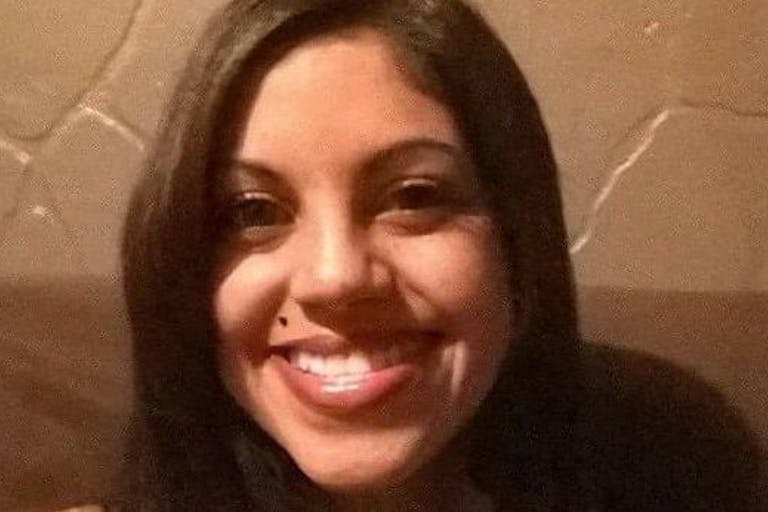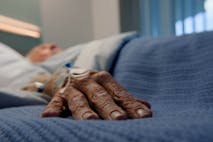
Research shows Catholic support for IVF declines once Church teaching is understood
Angeline Tan
·
Five years ago, abortionists killed Keisha Atkins, and abortion is more dangerous than ever
It’s been five years since 23-year-old Keisha Atkins and her 24-week-old baby died at the hands of abortionists on February 4, 2017. Still, most Americans are unaware of Atkins’ death or the deaths of other women due to legal abortion in the United States. Major news networks including CNN, ABC, and NBC have failed to report on how Atkins died or how any woman has been harmed by abortion.
Lack of quality care
Atkins and her baby are thought to have both been overall healthy when she went for a late-term abortion at Southwestern Women’s Options in New Mexico, owned by Curtis Boyd. Abortionist Shannon Carr said under oath during hearings regarding Atkins’ death that Atkins needed the abortion in order to prevent “substantial and irreversible harm to her physical health, her mental health, her family health, her safety and well being.” Carr, along with fellow abortionists Carmen Landau and Shelley Sella, signed a document obtained by Abortion on Trial stating that Atkins needed an abortion at six months gestation for health reasons including her physical, familial, and mental health.
Yet Carr only spoke to Atkins for 20 minutes and failed to actually use established criteria for examining Atkins’ mental health. She admitted to speculating that Atkins would struggle with depression, anxiety, and financial instability as a young, single mother. No attempt was made to review Atkins’ medical history. Carr said that by “physical harm,” she simply meant the usual effects of pregnancy on a woman’s body. However, during the same hearings, Boyd admitted that late-term abortion itself carries heavy risks to the woman’s health that pregnancy could never cause.
Atkins’ abortion was paid for by Medicaid, which could have contributed to Carr’s treatment of Atkins. In court, Carr made discriminatory comments about Atkins, saying that a baby would harm her “overall prospects in life” because of her race. “Again, wanting to get more education, not just work at Applebee’s for the rest of her life. Um, you know, I can’t know what she’s wanting to do with her life but certainly, having a child changes the calculus of what a young Latina woman is able to do in this… country,” said Carr.
But Atkins was not Latina, she was Black and Native American. And working at a restaurant is not proof that Atkins could not be a mother and achieve her goals. Carr even admitted that she didn’t know what career Atkins hoped for, but assumed no one would want to work at Applebee’s. But just as race doesn’t make a person less capable of achieving their goals, a service job doesn’t make anyone less capable of being a mother. Carr also assumed that Atkins was at risk of domestic violence.
READ: New Mexico late-term abortion facility recorded 50 injuries in just seven years
Documents obtained by Abortion on Trial show that Atkins was repeatedly drugged by staff at Southwestern Women’s Options, with fentanyl and Versed (midazolam). Medline explicitly states that fentanyl should only be used to treat cancer pain and that it can cause “serious breathing problems.” Medline also noted that Versed is known to cause “serious or life-threatening breathing problems such as shallow, slowed, or temporarily stopped breathing that may lead to permanent brain injury or death.” In addition, Atkins was given oxycodone and two doses of Mifeprex (the abortion pill) as part of an experiment.
Carr and her co-workers showed no regard for Atkins or her baby as human beings. They did not make an attempt to find her assistance to keep her baby if that’s what she wanted. She was 24 weeks along, yet babies born as young as 21 weeks can survive outside the womb. Carr took the money from the government to pay for the abortion and killed Atkins and her baby based on discriminatory speculation.
Cause of death
Article continues below
Dear Reader,
In 2026, Live Action is heading straight where the battle is fiercest: college campuses.
We have a bold initiative to establish 100 Live Action campus chapters within the next year, and your partnership will make it a success!
Your support today will help train and equip young leaders, bring Live Action’s educational content into academic environments, host on-campus events and debates, and empower students to challenge the pro-abortion status quo with truth and compassion.
Invest in pro-life grassroots outreach and cultural formation with your DOUBLED year-end gift!
According to a final operative report (warning: graphic) from the University of New Mexico hospital provided to Live Action News by Abortion on Trial, Atkins’ postoperative diagnoses show that she suffered from “respiratory distress” and “septic abortion.”
Atkins first arrived at Southwestern Women’s Options on January 31, 2017, to undergo an induction abortion, which takes up to four days to complete. During this abortion procedure, a drug is injected into the baby’s heart or head to cause a heart attack. Over the next few days, the mother is sent home or to a hotel to wait for her cervix to be dilated by the laminaria the abortionist had inserted. After January 31, Atkins returned to the facility over the course of the following four days, and each time she was drugged and sent back to a hotel with no medical supervision. After returning to the abortion facility on February 3, she was also given Benadryl and albuterol, but went into respiratory distress and was taken to the hospital where she died.
Media silence
Atkins isn’t the first woman to die from legal abortion in the US, but major media outlets have failed to report on most of these deaths, even though in Atkins’ case, the abortionists responsible for her death were questioned during a hearing for the investigation into her death. Women who may be planning to go to Southwestern Women’s Options or any other abortion facility, are owed the truth — that abortion is not the safe procedure the abortion industry wants them to believe it is.
Abortion is more dangerous
Now, five years later, the media continues to take part in the massive cover-up of abortion injuries. In addition, the FDA gave the green light for abortionists to administer the abortion pill to women they’ve never even met in person. The “no-test” abortion pill protocol puts women at risk of infection, hemorrhage, death, and the loss of future pregnancies. About half of all states don’t require abortion-related complications to be reported, and it was recently decided that the only abortion pill complication that must be reported to the FDA is death — meaning women cannot know the true safety of the abortion pill. The ability to sell the abortion pill to women over the internet and through the mail is extremely profitable with little to no overhead costs for the abortion industry. Yet the media continues to claim it is safe for women.
If women knew the abortion pill was four times more dangerous for them than a first-trimester surgical abortion, they may not take it. If the media told the truth about how risky abortion is for women, maybe women wouldn’t give in to the pressure to abort.
This failure to report basic medical information leaves women more vulnerable and at risk, but the media continues to repeat the lie that abortion is safe and that it is standard women’s health care. The lack of care and the discrimination Atkins suffered at Southwestern Women’s Options is perpetrated against thousands more women in the United States every day who seek abortion while having no idea what they’ve signed up for.
“Like” Live Action News on Facebook for more pro-life news and commentary!
Live Action News is pro-life news and commentary from a pro-life perspective.
Contact editor@liveaction.org for questions, corrections, or if you are seeking permission to reprint any Live Action News content.
Guest Articles: To submit a guest article to Live Action News, email editor@liveaction.org with an attached Word document of 800-1000 words. Please also attach any photos relevant to your submission if applicable. If your submission is accepted for publication, you will be notified within three weeks. Guest articles are not compensated (see our Open License Agreement). Thank you for your interest in Live Action News!

Angeline Tan
·
Politics
Cassy Cooke
·
Guest Column
Right to Life UK
·
Issues
Angeline Tan
·
Issues
Bridget Sielicki
·
Issues
Nancy Flanders
·
Human Interest
Nancy Flanders
·
Politics
Nancy Flanders
·
Human Interest
Nancy Flanders
·
Politics
Nancy Flanders
·
Human Interest
Nancy Flanders
·